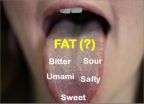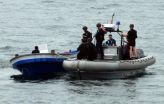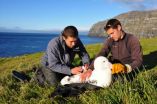(Press-News.org) SANTA CRUZ, CA--Robotics experts at the University of California, Santa Cruz and the University of Washington (UW) have completed a set of seven advanced robotic surgery systems for use by major medical research laboratories throughout the United States. After a round of final tests, five of the systems will be shipped to medical robotics researchers at Harvard University, Johns Hopkins University, University of Nebraska, UC Berkeley, and UCLA, while the other two systems will remain at UC Santa Cruz and UW.
"We decided to follow an open-source model, because if all of these labs have a common research platform for doing robotic surgery, the whole field will be able to advance more quickly," said Jacob Rosen, associate professor of computer engineering in the Baskin School of Engineering at UC Santa Cruz and principal investigator on the project.
Rosen and Blake Hannaford, director of the UW Biorobotics Laboratory, lead the research groups that developed the Raven II robotic surgery system and its predecessor, Raven I. A grant from the National Science Foundation funded their work to create seven identical Raven II systems. Hannaford said the systems will be shipped out from UW by the end of January. After they are delivered and installed, all seven systems will be networked together over the Internet for collaborative experiments.
Robotic surgery has the potential to enable new surgical procedures that are less invasive than existing techniques. For some procedures, such as prostate surgery, the use of surgical robots is already standard practice. In addition, telesurgery, in which the surgeon operates a robotic system from a remote location, offers the potential to provide better access to expert care in remote areas and the developing world. Having a network of laboratories working on a common platform will make it easier for researchers to share software, replicate experiments, and collaborate in other ways.
Even though it meant giving competing laboratories the tools that had taken them years to develop, Rosen and Hannaford decided to share the Raven II because it seemed like the best way to move the field forward. "These are the leading labs in the nation in the field of surgical robotics, and with everyone working on the same platform we can more easily share new developments and innovations," Hannaford said.
According to Rosen, most research on surgical robotics in the United States has focused on developing new software for various commercially available robotic systems. "Academic researchers have had limited access to these proprietary systems. We are changing that by providing high-quality hardware developed within academia. Each lab will start with an identical, fully-operational system, but they can change the hardware and software and share new developments and algorithms, while retaining intellectual property rights for their own innovations," Rosen said.
The Raven II includes a surgical robot with two robotic arms, a camera for viewing the operational field, and a surgeon-interface system for remote operation of the robot. The system is powerful and precise enough to support research on advanced robotic surgery techniques, including online telesurgery.
In addition to Rosen and Hannaford, UCSC postdoctoral researchers Daniel Glozman and Ji Ma, along with a group of dedicated undergraduate students working in Rosen's Bionics Lab, played a key role in developing the Raven II. Rosen and Glozman have also developed a Raven IV surgical robotics system, which includes four robotic arms and two cameras. The system enables collaboration between two surgeons working from separate locations and connected over the Internet.
###
END
University of Illinois researchers have shown that by tuning the properties of laser light illuminating arrays of metal nanoantennas, these nano-scale structures allow for dexterous optical tweezing as well as size-sorting of particles.
"Nanoantennas are extremely popular right now because they are really good at concentrating optical fields in small areas," explained Kimani Toussaint, Jr., an assistant professor of mechanical science and engineering at the University of Illinois at Urbana-Champaign. "In this work, we demonstrate for the first time the use of arrays ...
Racial discrimination may be harmful to your health, according to new research from Rice University sociologists Jenifer Bratter and Bridget Gorman.
In the study, "Is Discrimination an Equal Opportunity Risk? Racial Experiences, Socio-economic Status and Health Status Among Black and White Adults," the authors examined data containing measures of social class, race and perceived discriminatory behavior and found that approximately 18 percent of blacks and 4 percent of whites reported higher levels of emotional upset and/or physical symptoms due to race-based treatment. ...
The perception that women are scarce leads men to become impulsive, save less, and increase borrowing, according to new research from the University of Minnesota's Carlson School of Management.
"What we see in other animals is that when females are scarce, males become more competitive. They compete more for access to mates," says Vladas Griskevicius, an assistant professor of marketing at the Carlson School and lead author of the study. "How do humans compete for access to mates? What you find across cultures is that men often do it through money, through status and ...
Why do we like fatty foods so much? We can blame our taste buds.
Our tongues apparently recognize and have an affinity for fat, according to researchers at Washington University School of Medicine in St. Louis. They have found that variations in a gene can make people more or less sensitive to the taste of fat.
The study is the first to identify a human receptor that can taste fat and suggests that some people may be more sensitive to the presence of fat in foods. The study is available online in the Journal of Lipid Research.
Investigators found that people with ...
SEATTLE – Continuing a series of groundbreaking discoveries begun in 2010 about the genetic causes of the third most common form of inherited muscular dystrophy, an international team of researchers led by a scientist at Fred Hutchinson Cancer Research Center has identified the genes and proteins that damage muscle cells, as well as the mechanisms that can cause the disease. The findings are online and will be reported in the Jan. 17 print edition of the journal Developmental Cell.
The discovery could lead to a biomarker-based test for diagnosing facioscapulohumeral muscular ...
LIVERMORE, Calif. --There are more exoplanets further away from their parent stars than originally thought, according to new astrophysics research.
In a new paper appearing in the Jan. 12 edition of the journal, Nature, astrophysicist Kem Cook as part of an international collaboration, analyzed microlensing data that bridges the gap between a recent finding of planets further away from their parent stars and observations of planets extremely close to their parent star. The results point to more planetary systems resembling our solar system rather than being significantly ...
The ability to catch international smugglers and terrorists just got upgraded with a Jan. 12 demonstration of collaborative software funded by the Office of Naval Research (ONR).
The Mission-Focused Autonomy (MFA) program was put into practice for the Joint Interagency Task Force (JIATF) South in Key West, Fla., during an exercise dubbed "Marathon." The collaborative information discovery and knowledge-sharing tools sift through government agency databases to support efforts by federal law enforcement for information on foreign nationals intent on harming national security ...
Paris/ Leipzig. Wandering albatrosses have altered their foraging due to changes in wind fields in the southern hemisphere during the last decades. Since winds have increased in intensity and moved to the south, the flight speed of albatrosses increased and they spend less time foraging. As a consequence, breeding success has improved and birds have gained 1 kilogram. These are the results of the study of an international research team published in the latest issue of the Science journal. However, these positive consequences of climate change may last short if future wind ...
A Rice University laboratory has found a way to turn common carbon fiber into graphene quantum dots, tiny specks of matter with properties expected to prove useful in electronic, optical and biomedical applications.
The Rice lab of materials scientist Pulickel Ajayan, in collaboration with colleagues in China, India, Japan and the Texas Medical Center, discovered a one-step chemical process that is markedly simpler than established techniques for making graphene quantum dots. The results were published online this month in the American Chemical Society's journal Nano ...
Deaf people who use sign language are quicker at recognizing and interpreting body language than hearing non-signers, according to new research from investigators at UC Davis and UC Irvine.
The work suggests that deaf people may be especially adept at picking up on subtle visual traits in the actions of others, an ability that could be useful for some sensitive jobs, such as airport screening.
"There are a lot of anecdotes about deaf people being better able to pick up on body language, but this is the first evidence of that," said David Corina, professor in the UC ...



